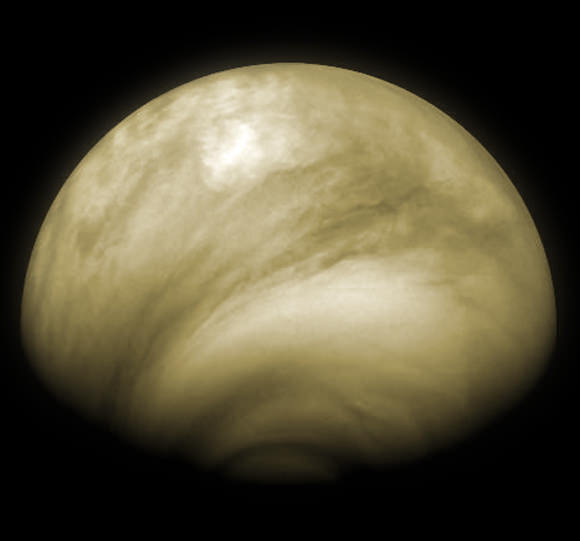[/caption]
Earth-sized exoplanets within a distant star’s habitable zone could still be very much uninhabitable, depending on potential tidal stresses — either past or present — that could have “squeezed out” all the water, leaving behind a bone-dry ball of rock.
New research by an international team of scientists suggests that even a moderately eccentric orbit within a star’s habitable zone could exert tidal stress on an Earth-sized planet, enough that the increased surface heating due to friction would boil off any liquid water via extreme greenhouse effect.
Such planets are dubbed “Tidal Venuses”, due to their resemblance to our own super-heated planetary neighbor. This evolutionary possibility could be a factor in determining the actual habitability of an exoplanet, regardless of how much solar heating (insolation) it receives from its star.
The research, led by Dr. Rory Barnes of the University of Washington in Seattle, states that even an exoplanet currently in a circular, stable orbit could have formed with a much more eccentric orbit, thus subjecting it to tidal forces. Any liquid water present after formation would then have been slowly but steadily evaporated and the necessary hydrogen atoms lost to space.
The risk of such a “desiccating greenhouse” effect would be much greater on exoplanets orbiting lower-luminosity stars, since any potential habitable zone would be closer in to the star and thus prone to stronger tidal forces.
And as far as such an effect working to create habitable zones further out in orbit than otherwise permissible by stellar radiation alone… well, that wouldn’t necessarily be the case.
Even if an exoplanetary version of, say, Europa, could be heated through tidal forces to maintain liquid water on or below its surface, a rocky world the size of Earth (or larger) would still likely end up being rather inhospitable.
“One couldn’t do it for an Earthlike planet — the tidal heating of the interior would likely make the surface covered by super-volcanoes,” Dr. Barnes told Universe Today.
So even though the right-sized exoplanets may be found in the so-called “Goldilocks zone” of their star, they may still not be “just right” for life as we know it.
The team’s full paper can be found here.

